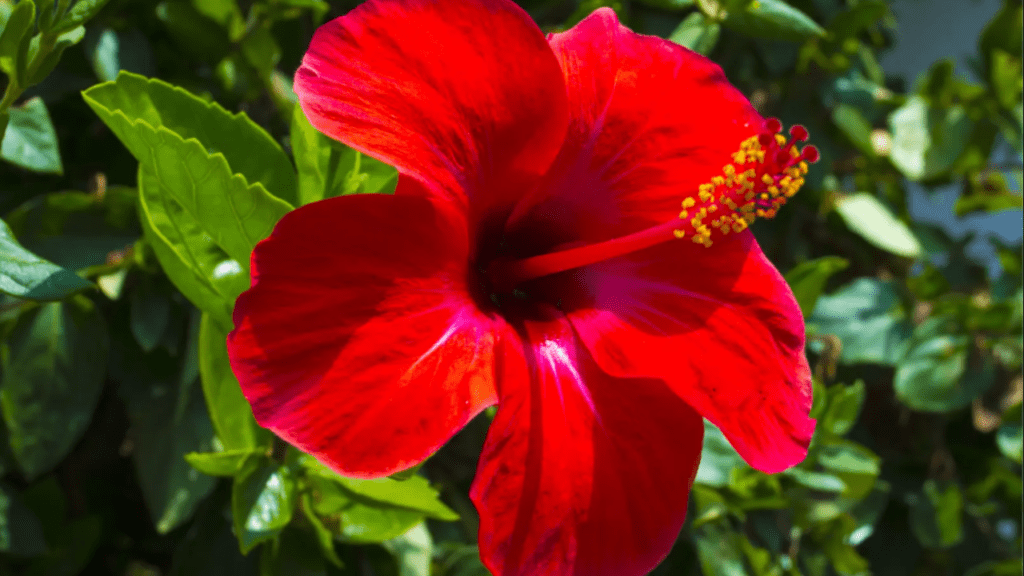
Braided Hibiscus Tree Care: Tips for Thriving and Beautiful Plants
Braided hibiscus trees are a beautiful addition to any garden or outdoor space, but they require specific care to thrive and remain healthy. In this post, we will cover everything you need to know about caring for your braided hibiscus tree, including watering and fertilizing tips, pruning techniques, and pest control. By following these valuable tips and techniques, you can ensure that your braided hibiscus tree remains beautiful and vibrant for years to come. Braided hibiscus trees, with their unique intertwined trunks and vibrant blooms, are a captivating addition to any patio or sunroom. These eye-catching plants offer a touch of the tropics year-round, but to keep them thriving, proper care is essential. This guide will equip you with the knowledge you need to nurture your braided hibiscus and enjoy its beauty for years to come.
Table of Contents
ToggleUnderstanding the Braided Hibiscus Tree
The Braided Hibiscus tree is a beautiful and unique addition to any garden or landscape. Some of the benefits of having a Braided Hibiscus tree include its stunning appearance, with its vibrant, colorful blooms and interesting braided trunk. It also attracts pollinators such as bees and butterflies, which can benefit the overall health of your garden. Additionally, the Braided Hibiscus tree is relatively low maintenance and can thrive in various climates, making it a versatile and attractive option for any outdoor space. The braided hibiscus tree, with its captivating intertwined trunks and vibrant blooms, is a conversation starter in any setting. But beyond its undeniable beauty lies a story of horticultural artistry and specific care needs. This guide delves into the world of braided hibiscus trees, exploring their origins, unique characteristics, and the requirements for keeping them thriving.
Watering and Fertilizing Tips
Watering Wisely:
- Finding the Sweet Spot: Braided hibiscus trees prefer consistently moist soil, but it’s crucial to avoid soggy conditions that can lead to root rot.
- The Finger Test: Here’s a handy trick: Stick your finger into the soil about an inch deep. On the other hand, if the soil feels moist, hold off on watering for a day or two.
- Frequency Matters: The frequency of watering will depend on several factors, including pot size, climate, and sunlight exposure. Generally, during the growing season (spring and summer), you can expect to water your braided hibiscus every 2-3 days. However, adjust this based on the factors mentioned above.
- Thorough and Even Watering: When watering, aim to soak the soil evenly until water begins to drain from the pot’s drainage holes. This ensures all the roots receive the moisture they need.
- Empty the Drainage Tray: Don’t let your braided hibiscus sit in water. After watering, ensure any excess water has drained from the pot and empty the drainage tray to prevent root rot.
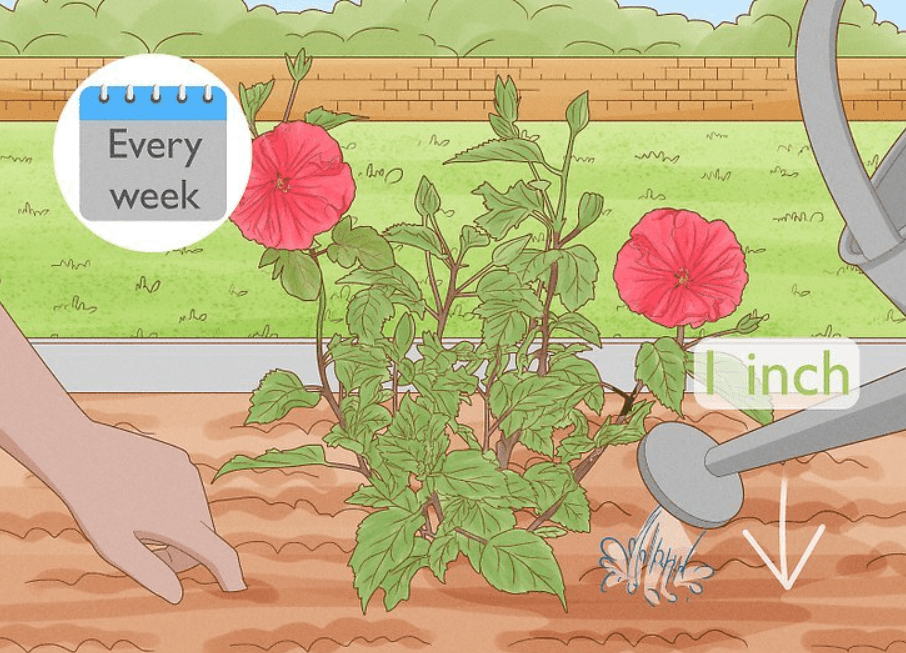
Fertilizing for Flourishing Blooms:
- Food for Growth: Fertilizer provides essential nutrients that promote healthy growth and vibrant blooms for your braided hibiscus.
- Balanced Approach: Opt for a balanced liquid fertilizer formulated for flowering plants. These fertilizers typically have equal amounts of nitrogen, phosphorus, and potassium (represented by the N-P-K ratio on the label).
- Feeding Schedule: During the active growing season (spring and summer), fertilize your braided hibiscus every two to four weeks. Dilute the fertilizer according to the manufacturer’s instructions to avoid burning the roots.
- Less is More During Dormancy: As fall approaches and your braided hibiscus enters dormancy, reduce fertilization frequency significantly. Once a month or even less is sufficient during this period.
Bonus Tips:
- Consider the Pot Material: Clay pots tend to dry out faster than plastic ones. So, if you’re using a clay pot, you might need to water your braided hibiscus more frequently.
- Watch for Signs of Thirst: Wilting leaves are a telltale sign that your braided hibiscus needs water. However, don’t wait until the plant wilts before watering, as this can stress the plant.
- Seasonal Adjustments: As mentioned earlier, adjust your watering and fertilizing practices based on the season. During winter, when the plant is less active, watering needs will decrease significantly.
By following these watering and fertilizing tips, you can ensure your braided hibiscus receives the right amount of moisture and nutrients to thrive and reward you with a stunning display of blooms throughout the growing season.
Pruning and Shaping Techniques
Understanding the Why:
- Preserving the Form: Regular pruning is essential to prevent wayward branches from disrupting the intricate braided design. Left unchecked, these branches can grow out of place, diminishing the visual appeal of the tree.
- Encouraging New Growth: Pruning stimulates new growth at the tips of branches, keeping the plant full and promoting abundant flowering.
- Maintaining Health: Removing dead, diseased, or damaged branches improves air circulation and prevents the spread of problems.
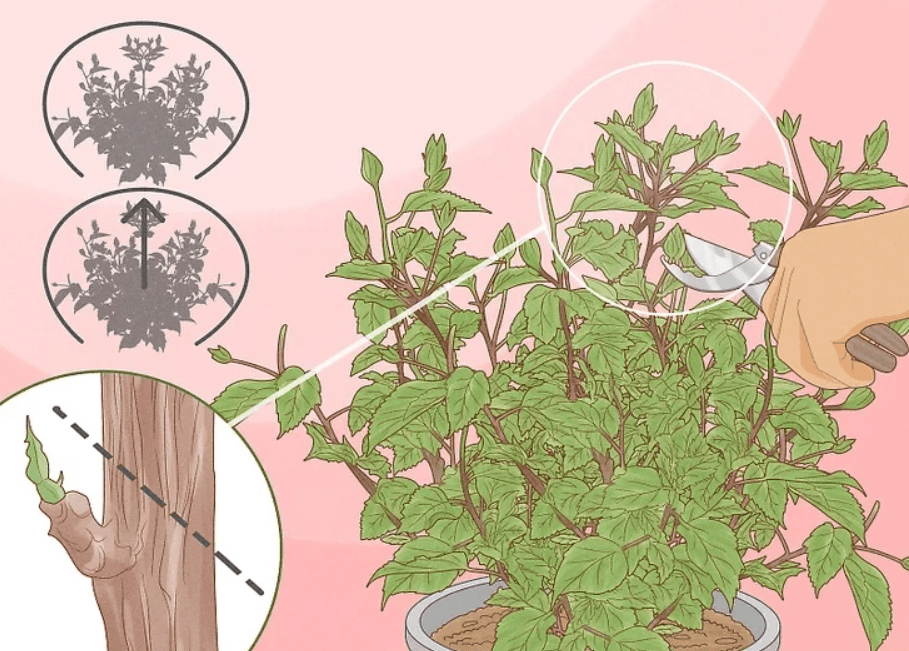
The Art of Pruning:
- The Right Tools: Equip yourself with sharp pruning shears or secateurs for clean cuts.
- Timing is Key: The ideal time to prune your braided hibiscus is after the flowering period has ended, typically in late summer or early fall. This allows the plant to focus its energy on recovering from pruning before winter dormancy.
- Focus on New Growth: Identify new growth emerging from the main braids. These are the branches you want to encourage.
- Selective Snips: Instead of drastic cuts, focus on removing small sections (around 1/4 to 1/3 of the branch length) of wayward branches that disrupt the desired shape.
- Respect the Braids: Avoid cutting into the main braided trunks themselves. This can damage the structure and compromise the health of the tree.
Shaping for Beauty:
- Maintaining Balance: Aim to achieve a balanced and symmetrical shape. Regularly observe your braided hibiscus from all sides and prune any branches that grow disproportionately.
- Encouraging Bushier Growth: To promote a bushier appearance, make angled cuts on new growth, encouraging the branch to grow outwards rather than upwards.
- Less is More: Remember, it’s always better to prune conservatively. You can always remove more later if needed, but once a branch is gone, it’s gone.
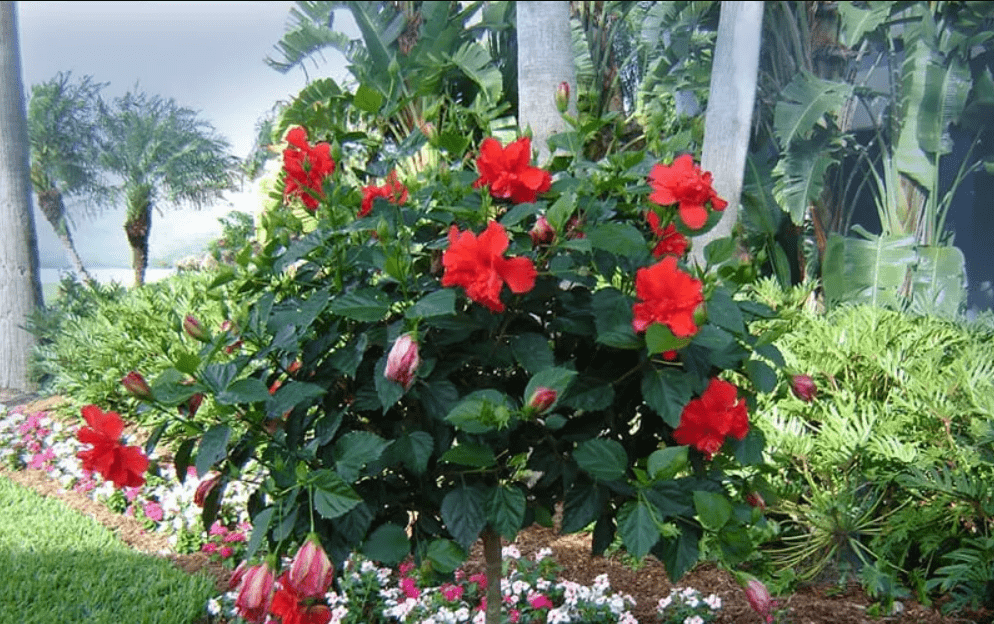
Additional Tips:
- Clean Cuts: Always make clean cuts with sharp tools to prevent ragged edges and promote faster healing.
- Sanitize Tools: Disinfect your pruning shears before and after use to prevent the spread of diseases.
- Start Early: If your braided hibiscus is young, start with light shaping trims early on to establish the desired form.
Pest Control and Disease Prevention
Common Pests:
- Aphids: These tiny, sap-sucking insects can cluster on the leaves and new growth, causing stunted growth and distorted leaves.
- Mealybugs: These soft-bodied insects with a cottony white appearance can also suck sap from leaves and stems, weakening the plant.
- Scale: These armored or scale-like insects attach themselves to stems and leaves, feeding on plant juices. They can leave behind sticky honeydew, which can attract further problems like sooty mold.
Signs of Pest Infestation:
- Look for the pests themselves on the leaves, stems, and undersides of leaves.
- Yellowing or distorted leaves can indicate sap-sucking insect damage.
- Sticky honeydew on leaves may signal the presence of scale insects.
Natural Control Methods:
- Blast them with water: A strong jet of water can dislodge aphids and other soft-bodied insects.
- Insecticidal soap spray: This organic option can be effective against aphids, mealybugs, and some scale insects. Apply according to the manufacturer’s instructions.
- Neem oil spray: Another organic option, neem oil can help control a variety of pests, including aphids, mealybugs, and scale.
Disease Prevention:
- Proper Watering: Overwatering is a major contributing factor to fungal diseases. Water your braided hibiscus only when the top inch of soil feels dry, and ensure your pot has adequate drainage.
- Air Circulation: Good air circulation around the plant helps prevent fungal diseases. Avoid overcrowding your braided hibiscus with other plants.
- Pruning for Airflow: Prune away any branches that create excessive congestion within the plant, allowing for better air circulation.
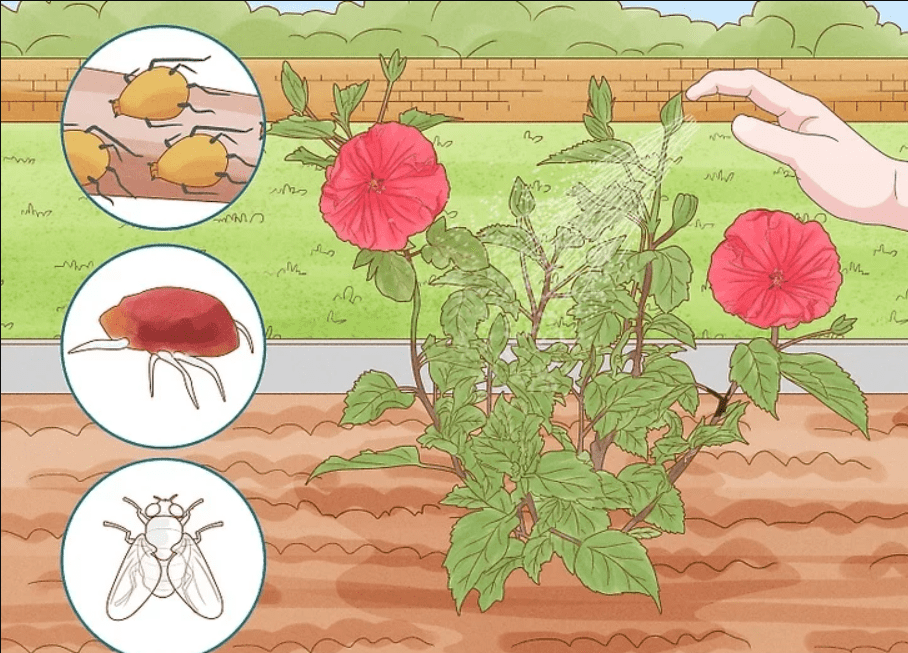
Common Diseases:
- Fungal Leaf Spot: This fungal disease causes brown or black spots to appear on the leaves. Severely affected leaves may drop prematurely.
- Botrytis Blight: Also known as gray mold, this disease thrives in cool, humid conditions. It causes wilting, browning, and fuzzy gray mold growth on flowers, leaves, and stems.
Treatment for Fungal Diseases:
- Remove infected leaves: Prune and discard any leaves showing signs of disease to prevent further spread.
- Fungicide application: In severe cases, a fungicide specifically labeled for use on hibiscus may be necessary. Always follow the application instructions carefully.
Keeping Your Braided Hibiscus Healthy:
By implementing these pest control and disease prevention strategies, you can create a healthy environment for your braided hibiscus to thrive. Remember:
- Regular inspection: Regularly inspect your braided hibiscus for signs of pests or diseases. Early detection and intervention are key to preventing problems from escalating.
- Organic solutions whenever possible: Opt for organic control methods like insecticidal soap spray or neem oil whenever possible. These methods are less harsh on the environment and beneficial insects.
- Promote overall plant health: A healthy plant with proper watering, fertilization, and sunlight is more resistant to pests and diseases.
By following these tips, you can ensure your braided hibiscus flourishes and continues to be a captivating focal point in your home or garden.
Proper Sunlight and Temperature Requirements
Sunlight: The Source of Life
- Sun Worshipper: Braided hibiscus trees crave sunshine! They require at least 6 hours of bright, indirect sunlight daily for optimal growth and flower production.
- Morning Light is Best: The ideal scenario is to position your braided hibiscus where it receives morning sunlight. This allows the plant to soak up the sun’s rays without enduring the scorching heat of the afternoon sun, especially in hot climates.
- Too Much of a Good Thing? While sunlight is essential, be mindful of intense afternoon sun, particularly in very hot regions. If your only option is a location with strong afternoon sun, consider filtering the light with a sheer curtain to prevent scorching of the leaves.
- Signs of Insufficient Light: If your braided hibiscus isn’t receiving enough sunlight, it might exhibit leggy growth, with long spaces between leaves, and produce fewer or even no flowers.
Temperature: Finding the Sweet Spot
- Tropical Roots: Remember, braided hibiscus trees hail from warm climates. They thrive in temperatures ranging from 60°F to 85°F (15°C to 29°C).
- Heat Tolerance: Braided hibiscus trees can tolerate some summer heat, but prolonged exposure to temperatures exceeding 90°F (32°C) can stress the plant, leading to bud drop and yellowing leaves.
- Sensitivity to Cold: These tropical beauties are not frost-tolerant. Temperatures dipping below 50°F (10°C) can damage the plant.
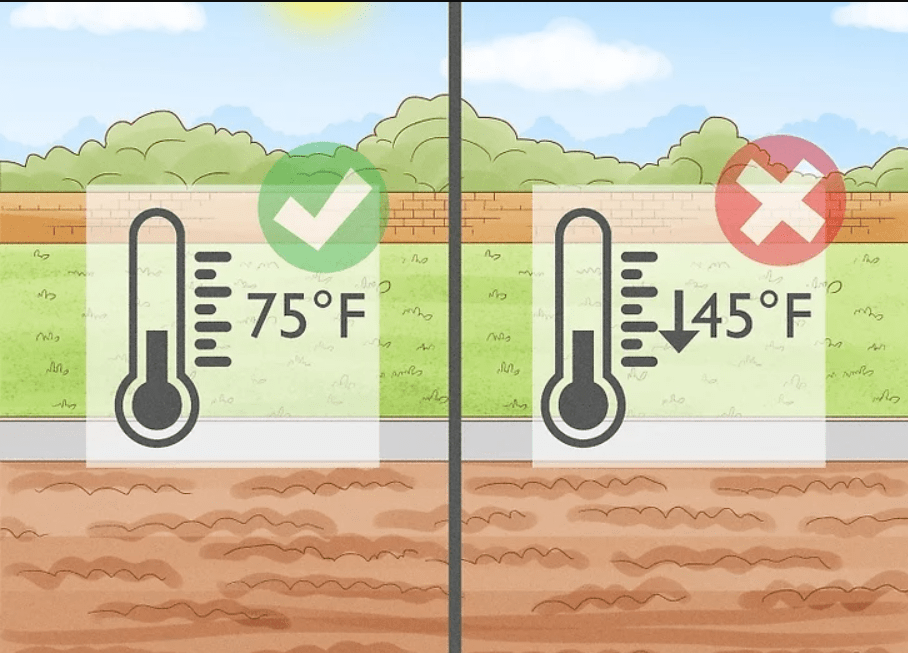
Seasonal Adjustments:
- Winter Considerations: If you live in a region with cold winters, it’s best to bring your braided hibiscus indoors to a sunny location. Alternatively, provide winter protection outdoors with frost cloth or burlap if temperatures dip below 50°F (10°C).
- Summer Shade: During scorching summer afternoons, particularly in hot climates, consider providing some temporary shade for your braided hibiscus to prevent heat stress.
Creating the Perfect Environment:
Here are some additional tips to ensure your braided hibiscus receives the sunlight and temperature it needs:
- Rotate the Pot Regularly: If your braided hibiscus is indoors, rotate the pot regularly to ensure all sides receive sufficient sunlight.
- Monitor Indoor Temperatures: During winter when your braided hibiscus is indoors, keep it away from cold drafts and heat sources like radiators or air vents.
- Consider Using a Grow Light: If you struggle to provide adequate natural sunlight indoors, especially during winter, consider supplementing with a grow light specifically designed for flowering plants.
Repotting and Soil Maintenance
Signs Your Braided Hibiscus Needs a Repot:
- Rootbound: The most common sign your braided hibiscus needs a repot is rootbound condition. Roots may start to emerge from the drainage holes, or the plant may become unstable due to a lack of space in the pot.
- Slow Growth: If your braided hibiscus seems to be growing very slowly or has stopped growing altogether, it could be rootbound and lacking the space it needs to thrive.
- Frequent Watering: A rootbound plant dries out faster as there’s less soil to retain moisture. If you find yourself watering your braided hibiscus more frequently than usual, it might be time to repot.
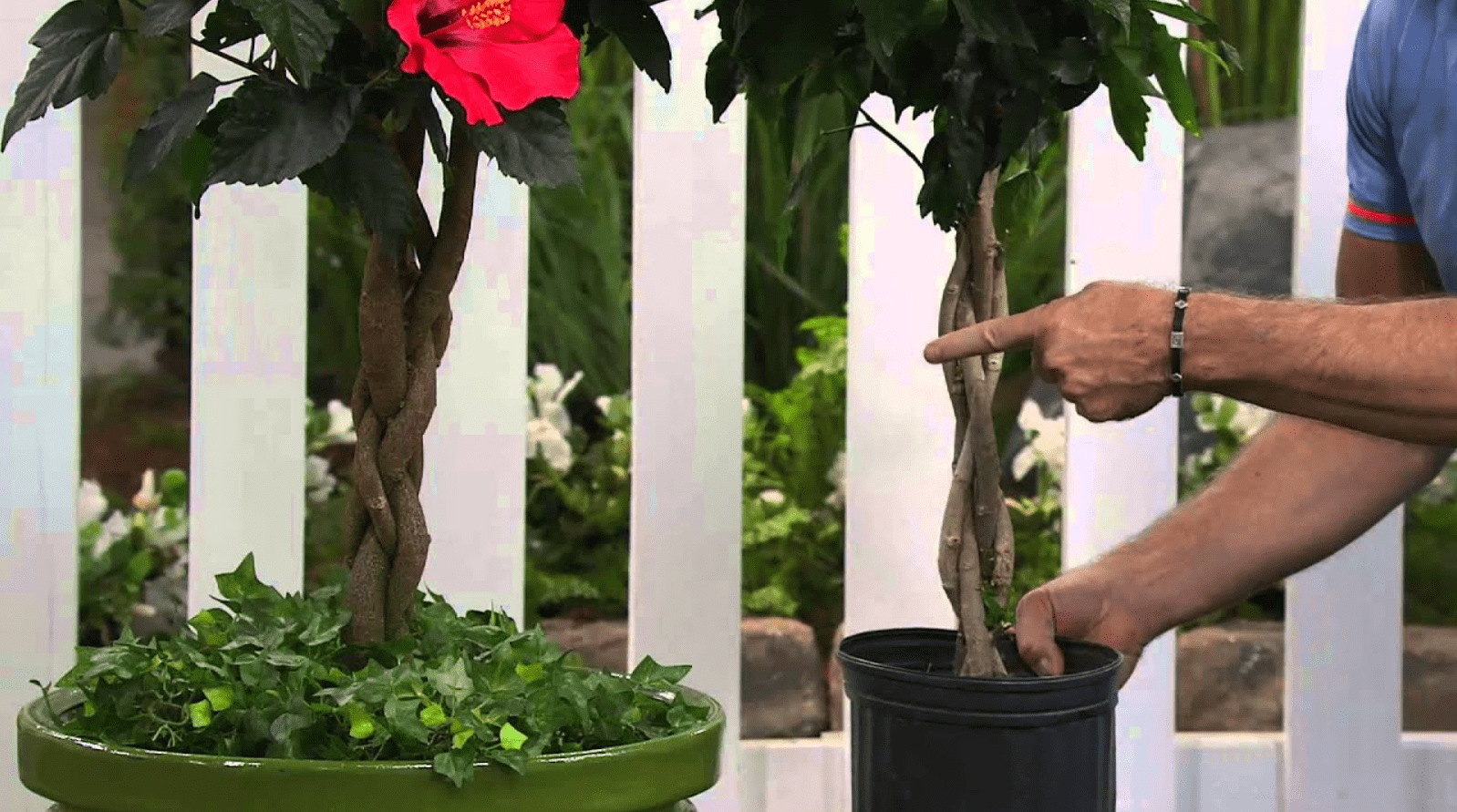
The Art of Repotting:
- Choosing the Right Time: The ideal time to repot your braided hibiscus is during its active growing season, typically in spring or early summer. Avoid repotting during flowering or dormancy.
- Selecting the Perfect Pot: Choose a new pot that’s only 2-3 inches larger in diameter than the current pot.
- Preparing the New Pot: Ensure the new pot has drainage holes at the bottom to prevent waterlogging. You can also add a layer of gravel or broken pottery shards to the bottom of the pot to improve drainage.
- Gently Removing the Plant: Water the braided hibiscus thoroughly a day before repotting to loosen the soil. Carefully tip the pot on its side and gently tap on the sides to loosen the root ball. Slide the plant out of the pot.
- Freshening Up the Root System: If the roots are severely rootbound, gently loosen them with your fingers. Avoid breaking or damaging healthy roots.
- New Soil for New Growth: Fill the new pot with fresh, well-draining potting mix specifically formulated for flowering plants.
- Settling In: Position the braided hibiscus in the new pot at the same soil level as it was in the previous pot. Fill in the gaps around the root ball with fresh potting mix and tamp it down gently to remove air pockets.
- Water Thoroughly: Water the newly repotted braided hibiscus thoroughly to settle the soil and ensure good contact with the roots.
Soil Maintenance for Continued Health:
- The Importance of Drainage: Well-draining soil is crucial for the health of your braided hibiscus. Avoid using heavy, waterlogged soil that can lead to root rot.
- Mulching Magic: Apply a 2-3 inch layer of organic mulch around the base of the plant (keeping it a few inches away from the trunk) to retain moisture, suppress weeds, and regulate soil temperature.
- Renewal Through Fertilization: Repotting disrupts some of the roots, so it’s beneficial to wait 4-6 weeks before resuming your regular fertilization routine.
Additional Tips:
- Repotting Frequency: Generally, braided hibiscus trees need repotting every 2-3 years, depending on their growth rate and pot size.
- Cleaning Up After Repotting: Clean the old pot before reusing it for another plant.
- Monitor After Repotting: Keep a close eye on your newly repotted braided hibiscus in the weeks following. It may need more frequent watering as it adjusts to its new environment.
Tips for Winter Care
Understanding Winter Sensitivity:
- Tropical Roots: Remember, braided hibiscus trees hail from warm climates and are not frost-tolerant. Temperatures dipping below 50°F (10°C) can damage the plant.
- The Importance of Protection: If you live in a region with cold winters, some form of winter protection is necessary to shield your braided hibiscus from frost and freezing temperatures.
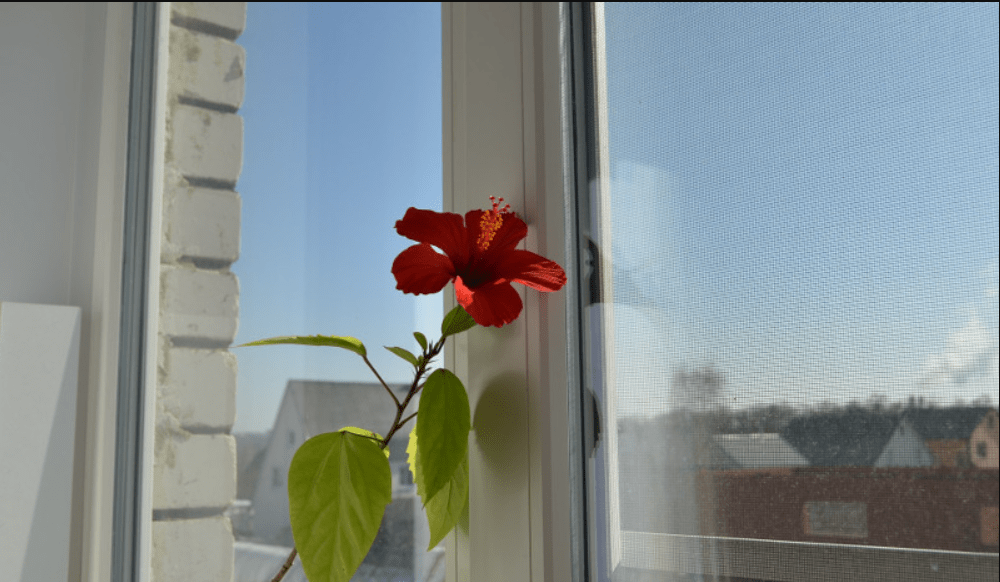
Indoor vs. Outdoor Winter Care:
Indoor Care:
- The Sunny Spot: If you can bring your braided hibiscus indoors, this is the ideal scenario for winter. Place it in a bright, sunny location, ideally near a south-facing window.
- Maintaining Warmth: Aim for consistent indoor temperatures between 60°F and 85°F (15°C and 29°C). Avoid placing the plant near cold drafts or heat sources like radiators or air vents.
- Adjusting Watering: During winter, your braided hibiscus will be less active and require less water.
- Maintaining Humidity: Dry indoor air can be stressful for your braided hibiscus. Consider using a humidifier to increase the humidity around the plant, especially if you have forced air heating.
Outdoor Care (if frost-free conditions are possible):
- Choosing a Sheltered Location: If bringing your braided hibiscus indoors isn’t an option, select a sheltered location outdoors that provides protection from wind and harsh winter elements. A south-facing wall with some overhang can offer some protection from the cold.
- Insulating the Pot: Wrap the pot securely with burlap or horticultural fleece to insulate the roots from freezing temperatures. Avoid using plastic wrap, as this can trap moisture and lead to root rot.
- Protecting the Top Growth: Loosely cover the top of the braided hibiscus with burlap or frost cloth to shield it from frost and freezing temperatures. Ensure the fabric isn’t touching the leaves to prevent damage.
- Watering Wisely: Outdoor winter rains might be sufficient, but if there’s a long dry spell, water sparingly to prevent the soil from drying out completely.
Signs of Winter Stress:
- Leaf Drop: Some leaf drop is natural during winter dormancy. However, excessive leaf drop could indicate the plant is too cold.
- Wilting: Wilting leaves can also be a sign of underwatering or cold stress.
Preparing for Spring:
- Gradual Acclimatization: When spring arrives and temperatures begin to rise consistently, gradually remove any winter protection from your braided hibiscus to allow it to acclimate to the warmer conditions.
- Resuming Care Routine: As warmer weather persists, you can resume your regular watering and fertilization routine.
Additional Tips:
- Inspect Regularly: Even with winter protection, it’s important to inspect your braided hibiscus outdoors regularly for signs of damage caused by cold temperatures.
- Prune for Spring Growth: Once the danger of frost has passed and new growth emerges, you can give your braided hibiscus a light pruning to shape it and encourage bushier growth.
Common Mistakes to Avoid
Watering Woes:
- Overwatering is the Arch-Nemesis: Remember, braided hibiscus trees prefer consistently moist soil, but not soggy conditions. Overwatering is a leading cause of root rot, a potentially fatal fungal disease. Always water when the top inch of soil feels dry and ensure your pot has adequate drainage.
- Underwatering is a Stress Factor: While overwatering is a bigger threat, neglecting to water your braided hibiscus can also be detrimental. Wilting leaves are a telltale sign of thirst.
Fertilizing Faux Pas:
- More Isn’t Always Merrier: While fertilizer provides essential nutrients for growth and blooms, overfertilizing can damage the roots and hinder overall plant health. Stick to a balanced fertilizer and follow the recommended dilution and frequency based on the growing season.
- Skipping Fertilizer During Active Growth: During spring and summer, when your braided hibiscus is actively growing and flowering, regular fertilization is essential. However, reduce fertilization significantly during the winter dormancy period.
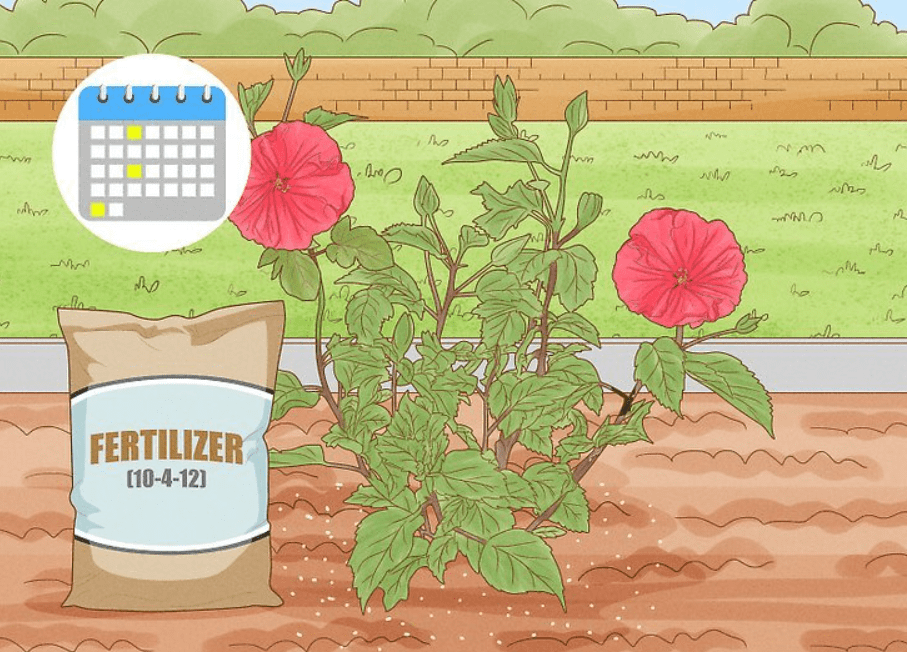
Light Location Lapses:
- Dim Lighting Leads to Lackluster Blooms: Braided hibiscus trees are sun-worshippers! They require at least 6 hours of bright, indirect sunlight daily for optimal growth and abundant flowering. Insufficient light can result in leggy growth, fewer flowers, or stunted overall health.
- Beware of Afternoon Sunburn: While sunlight is crucial, intense afternoon sun, especially in hot climates, can scorch the leaves. Consider filtering the light with a sheer curtain or moving the plant to receive morning sun instead.
Pruning Pitfalls:
- Neglecting to Prune: Regular pruning is essential for maintaining the intricate braided form and encouraging healthy new growth. Skipping pruning can lead to an overgrown, unshapely hibiscus and potentially block essential sunlight from reaching inner branches.
- Drastic Cuts Disrupt the Design: When pruning your braided hibiscus, focus on removing small sections of wayward branches that disrupt the desired shape. Avoid drastic cuts, especially into the main braided trunks, as this can damage the structure and compromise the plant’s health.
Winter Woes:
- Leaving Your Braided Hibiscus Exposed to Frost: Braided hibiscus trees are not frost-tolerant. If you live in a region with cold winters, it’s crucial to bring your braided hibiscus indoors to a sunny location or provide adequate winter protection outdoors, such as wrapping the pot and covering the top growth with burlap or frost cloth.
- Sudden Shifts from Winter to Spring: When spring arrives, resist the urge to abruptly expose your braided hibiscus to full sun and resume your regular watering routine. Gradually introduce these changes to allow the plant to acclimatize to the warmer conditions and prevent stress.
Bonus Tip:
- Ignoring Potential Pests and Diseases: Regularly inspect your braided hibiscus for signs of pests like aphids, mealybugs, or scale, and diseases like fungal leaf spot. Early detection and intervention are key to preventing problems from escalating. Opt for organic control methods whenever possible to minimize harm to the environment and beneficial insects.
Frequently Asked Questions(FAQ)
Water your braided hibiscus tree when the top inch of soil feels dry. Typically, this means watering every 2-3 days during the growing season and reducing frequency in the winter.
Braided hibiscus trees thrive in full sun. They need at least 6 hours of direct sunlight each day to produce vibrant blooms.
Use a balanced, water-soluble fertilizer every 2-4 weeks during the growing season (spring and summer). Reduce fertilizing during the fall and winter months.
Prune your hibiscus tree in late winter or early spring. Remove dead or crossing branches and shape the tree to maintain its structure.
Yes, you can grow it indoors if it receives ample sunlight. Place it near a south-facing window and ensure proper watering and humidity.
Yellowing leaves can indicate overwatering, nutrient deficiency, or pest issues. Adjust watering practices, check soil drainage, and inspect for pests.
Regularly inspect the plant for signs of aphids, spider mites, or whiteflies. Use insecticidal soap or neem oil to treat infestations.
Hibiscus trees prefer temperatures between 60-85°F (15-29°C). Protect them from frost and extreme heat for optimal health.
Repot in spring every 2-3 years or when roots outgrow the current pot. Choose a slightly larger pot with well-draining soil.
